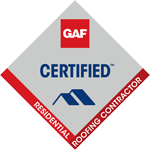A quality roofing installation can protect you from freezing weather in winter or the scorching sun in summer. But severe weather can also damage your roofing. Here are four ways the weather can impact your roof’s longevity.
1. Cracked Flashing and Roof Leaks
Flashing refers to thin metal strips under roofing tiles or on the joints of roofing components. Metal flashing creates a water-resistant barrier that prevents water damage to the underlying structure.
Unfortunately, flashing tends to rust after exposure to wind and rain. Rusting can also develop rapidly if the installation relies on substandard roofing materials.
Make a point of routinely checking if the seal is intact. Quality metal flashing will have a rubberized coating on top. If you can see the metal strips, it often means the flashing is exposed and requires prompt action to prevent further damage.
2. Missing or Warped Shingles
In Reno, NV, wind speeds tend to peak in late winter. Any significant exposure to high winds can break and weaken shingles.
Missing shingles can cause roof leaks that damage the drywall or trigger wood rot or microbial growth. Therefore, the longer you wait, the more expensive it will be to fix such issues.
You can consult a roofing replacement contractor like Joe’s Roofing in Reno for long-lasting shingle roofing tiles. These shingles have unique features like built-in nail strips to secure the tile more firmly to the roof’s structure.
3. Rapid Loss of Shingles Granules
The loss of granules is another sign of deteriorating roofing shingles. High winds and heavy rains can contribute to the erosion of the tile’s surface. If you spot granules in the gutter’s downspout, it indicates premature surface erosion on the shingles.
Granule erosion can cause the tile to become brittle and break due to the sun’s exposure. The shingles become more susceptible to damage during storms and heavy rainfall. It is advisable to organize an inspection of your roofing to prevent a vicious cycle that may trigger recurring repair problems.
4. Tile Deterioration and Fluctuating Temperatures
The unique weather in Reno is characterized by fluctuating temperatures throughout the year. Hot and cold weather will force the tiles to expand and contract, leading to broken or curled shingles.
You can address the problem of fluctuating temperatures by ensuring the attic is adequately ventilated. As heat accumulates under your roof, the higher the risk of shingles damage.
You can remove obstructions around the vents to ensure the attic has adequate airflow. Tree branches and other types of debris could be causing heat buildup under the roof. Also, check your attic for signs of condensation or microbial growth.
If you spot signs of deterioration, consult a roofing contractor for an inspection. Joe’s Roofing can guide you as you decide on the best options for your new construction in Reno.





